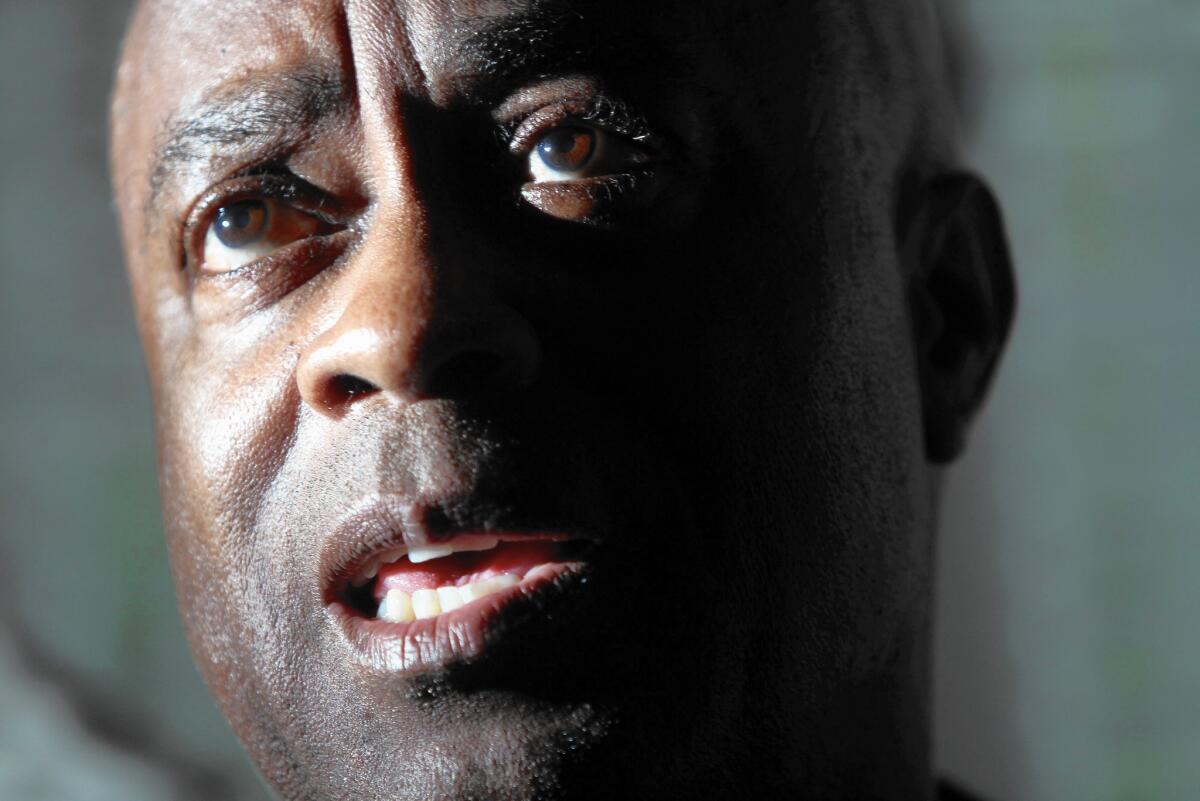A prior journey across the bridge in ‘Selma, Lord, Selma’

- Share via
Long before the Oscar-nominated “Selma” was championed as the first major motion picture about the Rev. Martin Luther King Jr., another film chronicled the civil rights leader’s march from Selma, Ala., to Montgomery.
“Selma, Lord, Selma” was a made-for-TV movie by Walt Disney Pictures. Originally broadcast in 1999, the docudrama was an adaptation of a memoir by Sheyann Webb-Christburg, Rachel West Nelson and Frank Sikora. Webb-Christburg and West were young girls at the time of the march, ages 8 and 9, respectively.
The two films were made 15 years apart but make some of the same stylistic and script choices, and just like “Selma” director Ava DuVernay — under fire for her portrait of President Lyndon B. Johnson — “Selma, Lord, Selma” director Charles Burnett knows all too well the sting of backlash that comes when portraying historical figures.
Burnett, who lives in Los Angeles, said it was important to make a film that would stir in youth “a sense that they can do something positive, that they can get out and march and have a sense of justice and act on it.”
King was central, Burnett said, “but he wasn’t really the main point of the film. It was these young girls’ experiences. It’s their discovery of the movement and the things that they witnessed growing up.”
At the start of the Disney film, a young Sheyann (Jurnee Smollett) skips class, against Rachel’s warnings, to hear King speak at a church when he arrives in Selma. From that moment, she’s bitten with the activism bug and invited by King to sing in front of the congregation at a larger meeting that evening. Her song of choice, which becomes an anthem throughout the film, is the freedom song “Ain’t Gonna Let Nobody Turn Me Around.”
Through the eyes of Sheyann, the movie focuses on the efforts of younger people involved in the nonviolent demonstrations for voting rights. That includes Jonathan Daniels (Mackenzie Astin) and Jimmie Lee Jackson (Zach Rogers), who worked to get blacks registered to vote throughout rural Alabama.
The film continues highlighting the events leading up to the infamous “Bloody Sunday” on the Edmund Pettus Bridge, where Sheyann is the youngest person to attempt to cross. It ends just after the third and final march, which crossed the bridge and ended at the state capital.
According to Webb-Christburg, now a 58-year-old activist living in Montgomery, “Selma, Lord, Selma” helped to raise consciousness about the role of youth in the movement.
“Young people were so amazed that children were involved,” she said about the film, which aired on the Disney Channel well into the 2000s. “It showcased the courage it took from a child’s perspective that wasn’t ordinary.”
Directors Burnett and DuVernay each took great pains to demonstrate the unjust practices of local officials who prevented blacks from registering to vote. In the film currently in theaters, Annie Lee Cooper (Oprah Winfrey) is asked to list the names of the 67 county judges throughout the state.A like scene from Burnett’s picture shows Amelia Boynton (Elisabeth Omilami) in the courthouse being instructed to guess the number of jelly beans in a massive jar on the counter.
Both DuVernay and Burnett took creative license in depicting the death of activist Jimmie Lee Jackson. In “Selma, Lord, Selma,” Jackson is killed on Bloody Sunday shortly after the group is forced off the bridge. In “Selma,” Jackson (Keith Stanfield) is shot in a restaurant after fleeing from cops at a late-night demonstration.
Burnett was excited when he heard that DuVernay would be at the helm of a new King film.
“I knew it was going to be a good film if she’s behind it,” he said.
She exceeded his expectations, he said, and has handled herself well following allegations of historical inaccuracies in her portrayal of President Johnson.
Burnett knows the feeling all too well after facing criticism for his portrayal of Joseph Smitherman, mayor of Selma during the time of the march. After doing weeks of research, Burnett believed the mayor to be a passive supporter of the demonstrations. As such, in “Selma, Lord, Selma,” Smitherman (Tom Nowicki) is depicted in a better light than other white government officials.
“It looked to me that he was a little different than the others, the people who were protesting the march,” Burnett said. “One day, I ran into this guy who was much more familiar with the situation, and particularly the mayor, and he said that in reality, [the mayor] was one of the worst people against civil rights.”
“Selma, Lord, Selma” inaccurately showed the death of Daniels, a seminarian volunteer, Webb-Christburg said. It showed him being murdered in Selma, when he actually was killed in neighboring Lowndes County.
People shouldn’t expect every detail in a dramatic work to be factually correct,said Burnett, who also directed the 1977 film “Killer of Sheep” and the 2007 film “Namibia: The Struggle for Liberation.”
“Every film alters the fact of whatever it is,” he said.
The blowback that DuVernay has received, he said, is “somewhat unfair and taken out of proportion.”
“I think scholars have a right to point out if there are things that are wrong with anything,” he said. “We’re all subject to criticism. But, OK, it was said. Is there a point where we move on?”
A member of the Academy of Motion Picture Arts and Sciences since the early ‘90s, Burnett doesn’t know if the negative publicity led to the perceived Oscar snubs of DuVernay and the film’s star, David Oyelowo.
What’s more important, he said, is the timeliness of the picture. Considering recent social and political conversations,from the U.S. Supreme Court striking down parts of the Voting Rights Act in 2013 to the local and national responses to police brutality, he said those who watch “Selma” should realize “the fight isn’t over.”
“This is just a reminder that these people went through this process and a lot of those things that they fought for are being challenged now.”
Webb-Christburg said watching “Selma” gave her mixed emotions — “good and sad” — as she reflected on childhood while events unfolded on the screen.
“This movie has come at a great time in our history,” she said. “It has put Selma again on the national stage.”
More to Read
Only good movies
Get the Indie Focus newsletter, Mark Olsen's weekly guide to the world of cinema.
You may occasionally receive promotional content from the Los Angeles Times.









